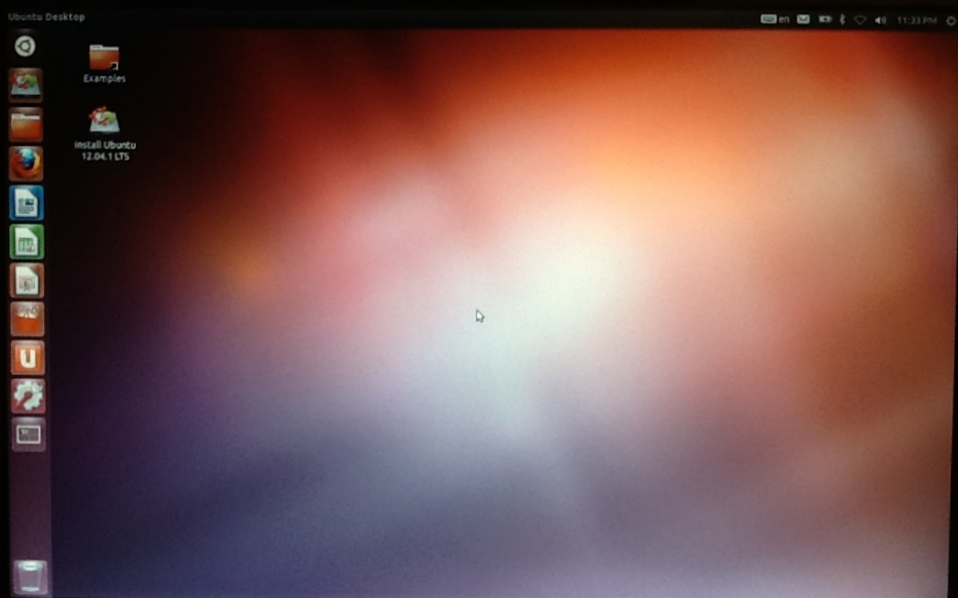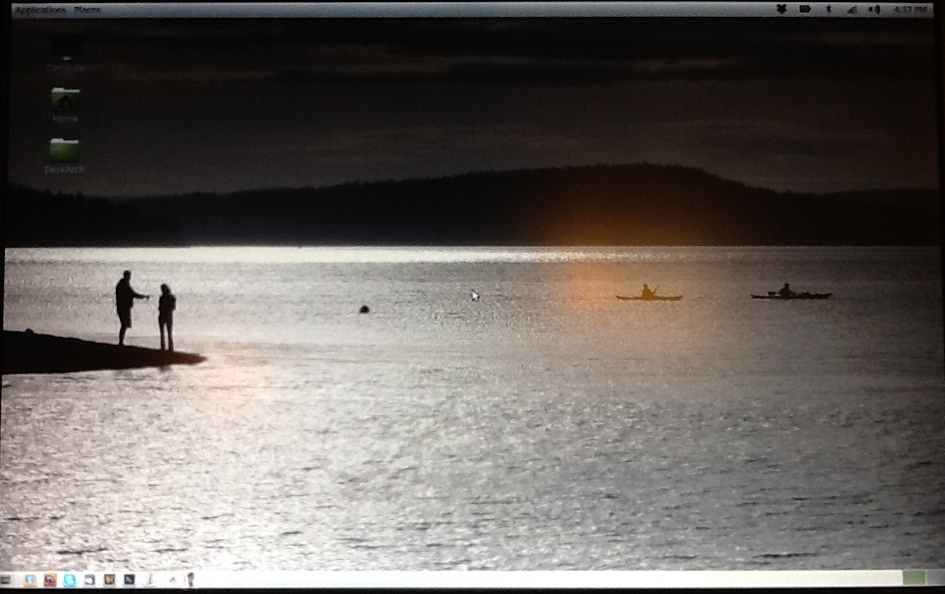I have been debating (in my own mind) whether or not I should write this post. Factors that kept me from writing it were mostly related to ‘information overload’. We have Windows and Mac, and for the most part these operating systems work pretty well, so why confuse my readers with yet another option? But, being the geek that I am, I’m always looking at technical options to solve specific problems, and trying to understand why someone else might care. Take the tablet for instance. Apple produces a lovely option with the iPad. But one might opt out of getting a tablet because it just too darn expensive. That’s why I wrote the Google Nexus piece. It introduced a very satisfactory tablet option for a lot less money than an iPad. In the same vein, one might have difficulty with Apple and Microsoft OS and application prices and be looking for a suitable option.
Enter Linux. Not to bore you with ‘ancient’ history, but we owe the existence of Linux to Linus Torvalds, who about 20 years ago release version 0.01 free to the world. Fortunately, the early version that booted from a floppy disk, ran only on a 386 processor, and supported only the Finnish keyboard, has grown up. In spite of Microsoft’s strong opposition to Linux in 2001, when they claimed Linux is a ‘cancer’, and that ‘open source’ destroys intellectual property, Linux survived and thrived.
From early 2000 on, the business and academic world embraced Linux, even though the desktop market still largely belongs to Microsoft (sorry Apple people, but that is the reality). After much gnashing of teeth and legal wrangling, even Microsoft showed signs of accepting and supporting Linux, as this Happy ‘20th’ Birthday video implies (Tux does accept the birthday cake from Bill in the end – sorry for the spoiler). That said, Linux continues to evolve and not only finds a home on servers and smartphones, but also on the desktops and laptops of the adventurous and thrifty. Adventurous, because Linux takes some patience and trial and error to become comfortable with it. And thrifty, because you can take yesterday’s desktop or laptop and run Linux just fine on it, and the OS and apps are free, free, free.
So now on to choices. Versions of Linux are called ‘distributions’ or ‘distros’. Most popular among them right now are Ubuntu, Red Hat, Fedora, Mandriva, SuSE, Xandros, and the list goes on. Your choice of distribution will depend largely on what you’re trying to do with it. As a desktop replacement OS, I have found the Ubuntu distribution to be the most complete, and most like the OSs you’re attempting to leave behind. More recently though, I have been playing a lot with Linux Mint and really like it. Both Ubuntu and Linux Mint work well installed on your hard drive, but can also be run (with performance compromises) from a USB stick or CD/DVD. This latter option is good for just test driving a new OS, but if you’re planning to use Linux over the long term, full installation is required. But if you’re considering always running from a CD, then Knoppix might be worth considering. As I said, your choice of distro will be based on what you want to do. Here’s a good website to check out to help you make your selection.
So now comes the interesting part – the test drive. Let’s use Ubuntu for our example. Start by going here to download the distro for your particular computer (32- or 64-bit). While the rather large .ISO file is downloading, you’ll want to read through the installation instructions available here. You’ll notice there are some decisions to make, like what media to use to install Ubuntu (DVD, USB drive, or via the Windows installer), then how you want to run Ubuntu (straight from DVD or USB stick, installed as the primary OS, or as an OS running alongside Windows, etc). The Ubuntu folks (and the other distros as well) have done a good job providing instructions that mere mortals (non-geeks) can follow.
So now that we have a file downloaded and installed on a USB stick (let’s assume this is how we’re going to do it), the last hurdle is getting your PC to boot from the USB drive. On a windows PC, by pressing F12 early in the boot process, you’ll usually be able to select the boot device and boot from the USD stick. This part can be a little tricky, but once you get past it, Linux will boot and you’ll be able to start exploring. I’m going to stop the blog at this point, but suffice to say that most of the Linux distros are very rich in functionality and provide office applications, video and audio playback utilities, photo and video editors, lots of tools for programmers, games, etc. Most of what I know about Linux has come from poking around in the OS and applications, and I’m rarely disappointed with the capabilities built into the Ubuntu and Mint distros that I’m most familiar with.
Although I still like using Windows for office stuff (like writing this blog entry) and photo editing, Mac for video editing, and Linux for programming, I believe everything I do with three different OSs could actually be done fine in Linux if I just took the time to learn all the tools provided there. Your needs might not be as varied as mine, so when you get tired of paying your Microsoft or Apple taxes, you just might consider giving Linux a try. Linux isn’t prefect (which OS is?), but it’s gotten pretty good over the years. Check it out…
Here’s an image of my current Ubuntu (12.04.1 LTS – Precise Pangolin) desktop (running from Live CD – not installed)
And an image of my Mint (13 Maya w/ Cinnamon) desktop (installed to harddrive)


